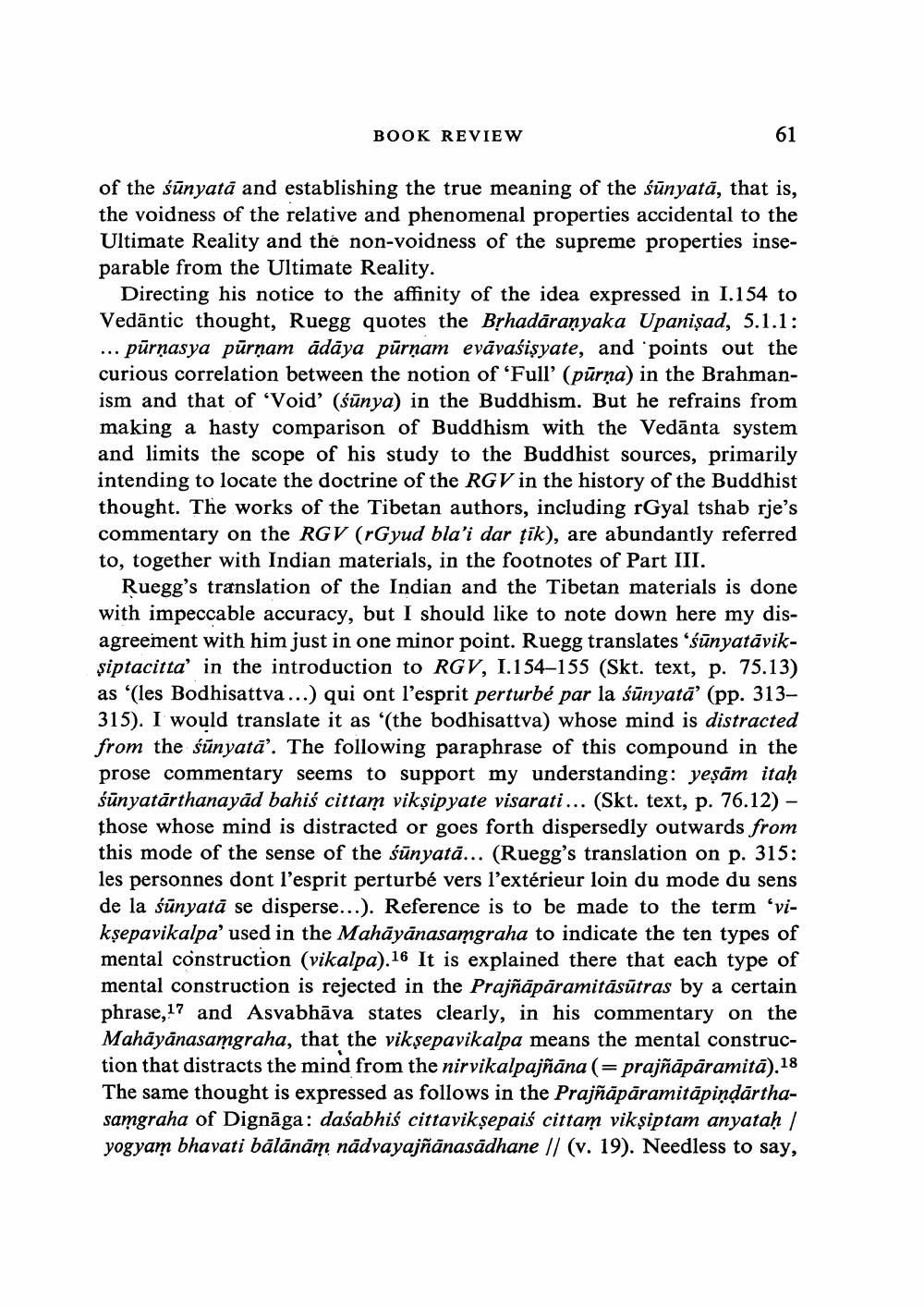________________ BOOK REVIEW of the sunyata and establishing the true meaning of the sunyata, that is, the voidness of the relative and phenomenal properties accidental to the Ultimate Reality and the non-voidness of the supreme properties inseparable from the Ultimate Reality. Directing his notice to the affinity of the idea expressed in 1.154 to Vedantic thought, Ruegg quotes the Bshadaranyaka Upanisad, 5.1.1: ... purnasya purnam adaya purnam evavasisyate, and points out the curious correlation between the notion of 'Full' (purna) in the Brahmanism and that of 'Void' (sunya) in the Buddhism. But he refrains from making a hasty comparison of Buddhism with the Vedanta system and limits the scope of his study to the Buddhist sources, primarily intending to locate the doctrine of the RGV in the history of the Buddhist thought. The works of the Tibetan authors, including rGyal tshab rje's commentary on the RGV (rGyud bla'i dar tik), are abundantly referred to, together with Indian materials, in the footnotes of Part III. Ruegg's translation of the Indian and the Tibetan materials is done with impeccable accuracy, but I should like to note down here my disagreement with him just in one minor point. Ruegg translates 'sunyataviksiptacitta' in the introduction to RGV, 1.154-155 (Skt. text, p. 75.13) as '(les Bodhisattva ...) qui ont l'esprit perturbe par la sunyata' (pp. 313315). I would translate it as '(the bodhisattva) whose mind is distracted from the sunyata". The following paraphrase of this compound in the prose commentary seems to support my understanding: yesam itah sunyatarthanayad bahis cittam viksipyate visarati... (Skt. text, p. 76.12) - those whose mind is distracted or goes forth dispersedly outwards from this mode of the sense of the sunyata... (Ruegg's translation on p. 315: les personnes dont l'esprit perturbe vers l'exterieur loin du mode du sens de la sunyata se disperse...). Reference is to be made to the term 'viksepavikalpa' used in the Mahayanasamgraha to indicate the ten types of mental construction (vikalpa).16 It is explained there that each type of mental construction is rejected in the Prajnaparamitasutras by a certain phrase, 17 and Asvabhava states clearly, in his commentary on the Mahayanasamgraha, that the viksepavikalpa means the mental construction that distracts the mind from the nirvikalpajnana (= prajnaparamita).18 The same thought is expressed as follows in the Prajnaparamitapindarthasamgraha of Dignaga: dasabhis cittaviksepais cittam viksiptam anyatah / yogyam bhavati balanam nadvayajnanasadhane // (v. 19). Needless to say,




